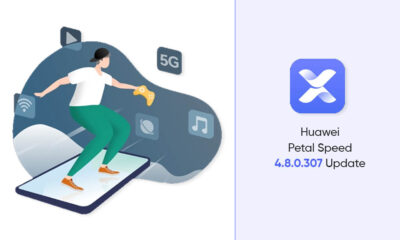HarmonyOS
HarmonyOS is catching iOS level for animation

Over the past three years, Huawei made several changes in its self-developed operating system – HarmonyOS but a recent aspect has caught me saying that it’s catching fast in animation against Apple’s iOS.
When it comes to intuitive UI animations, there’s a level of greatness achieved by iOS. And it seems like, Huawei is on the way to achieving similar advancement, which isn’t prioritized by other phone makers.
So, how does it reach this conclusion? Well, I took hands-on of HarmonyOS 3.1 (EMUI 13.1), which helped me to come up with an evaluation of the newest developments.
According to our past report, HarmonyOS 3.1 focuses mainly on system animations. Let’s dive into my experience, which I am describing in the following viewpoints;
- Swipe gestures
- Navigation
- Transition
- Fluency
What I’ve Found?
Gestures on the home screen are now more responsive. For example, when you change the home screen, the screen content quickly responds to the gesture direction.
Swipe up gesture app icon feature is now more fluid, the action opens a widget preview with seamless animation. And it shrinks back to the app if the action is canceled. This is different from HarmonyOS 3.0. These actions are similar to what I’ve compared with iOS 16.
Navigation is another aspect of HarmonyOS 3.1, these could be experienced with elastic animations while opening or closing an app. Also, the scrolling is smoothened in a high refresh rate screen of flagship devices.
When you launch an app, the app is loading faster than HarmonyOS 3.0 and you now interrupt the app launch better than ever. These app launch interruptions are also on the level of iOS.
New transitions are added to the core UI components. For example, when you switch between service widgets combos or stack widgets, the swipe gesture is recognized and tracks your finger tap from the moment you put it on the screen.
Similarly, when you open and minimize an app, the app will respond with expand and compress animations. These contribute to interactiveness. Another interesting change that Huawei has improved in this version compared to iOS is the phone unlock.
Once unlocked, the fluency of returning with that spring-reveal transition of the on-screen component catches our attention. Although, there are more small tweaks made in the transition area yet one more deserves a shoutout. We also mentioned this during the beta testing of HarmonyOS 3.1,
When you open up the notification center in HarmonyOS 3.1, the clock, and the status bar components fire the smoothest transition, which is kept slow for the purpose of revelation and comes into action smoother than in iOS.
So, folks, this is my initial evaluation, which left a whole new impression in terms of animation. It shows the HarmonyOS is now closely catching the level of iOS for animation and user interactions.
From a point of view, this is a good thing for consumers.






